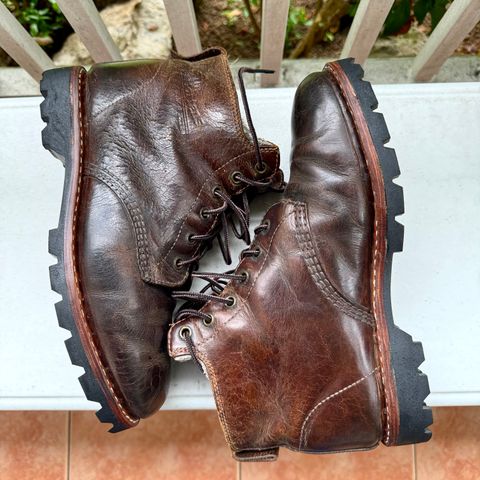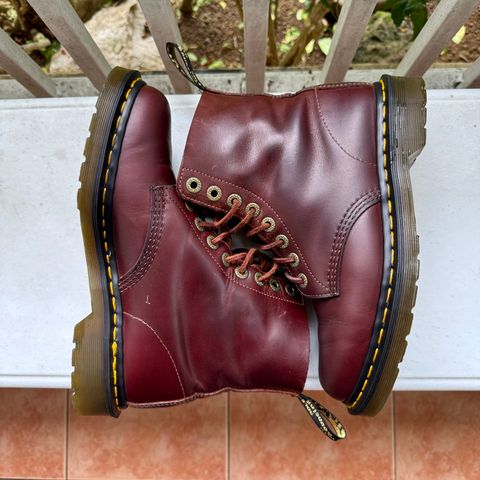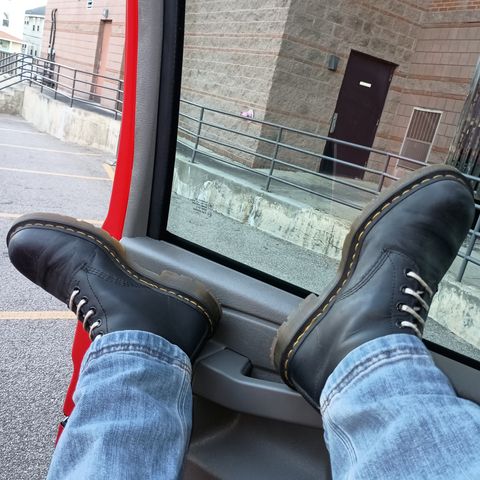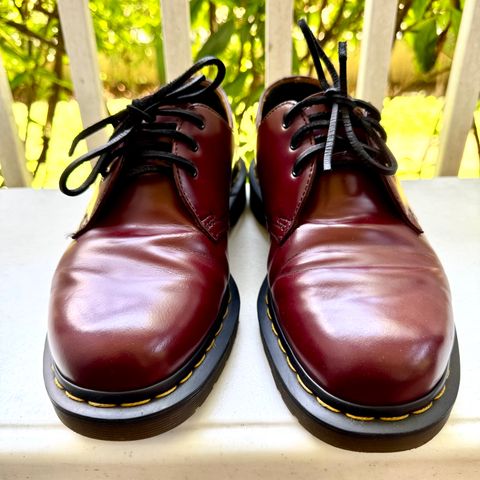Dr. Martens
MakerAbout
Dr. Martens is a British footwear company founded in 1960 that manufactures boots and shoes characterized by air-cushioned soles, distinctive yellow welt stitching, and welted construction. Originally developed as work boots for Britain's working classes, Dr. Martens became an iconic symbol adopted by various subcultures and musicians, with over 100 million pairs sold between 1960 and 2010.
About
Dr. Martens is a British footwear company founded in 1960 that manufactures boots and shoes characterized by air-cushioned soles, distinctive yellow welt stitching, and welted construction. Originally developed as work boots for Britain's working classes, Dr. Martens became an iconic symbol adopted by various subcultures and musicians, with over 100 million pairs sold between 1960 and 2010.
The company originated from a partnership between German inventor Dr. Klaus Maertens, who created an air-cushioned sole design in 1945, and British manufacturer R. Griggs Group, which acquired the patent rights in 1959. The name was anglicized from "Maertens" to "Martens," and the distinctive design features were established, including the signature yellow welt stitch that has become legally protected. Dr. Martens operates manufacturing facilities in England and Asia, with the Made in England line representing premium construction using traditional methods and higher-quality materials.
History and Founding
Dr. Martens originated in 1945 when Dr. Klaus Maertens, a 25-year-old soldier and medical doctor, created a unique air-cushioned sole to aid his recovery from a broken foot. Maertens partnered with engineer Dr. Herbert Funk, and by 1947 they began formal production of their innovative shoe design. The business grew rapidly, with sales increasing significantly enough that they opened a factory in Munich by 1952.
In 1959, Maertens and Funk sought international expansion and British shoe manufacturer R. Griggs Group acquired patent rights to manufacture the shoes in the United Kingdom. The R. Griggs Group made several key design modifications, including an altered heel, bulbous but simple upper, distinctive yellow welt stitch, two-tone grooved sole edge, and unique sole pattern. They also anglicized the company name from "Maertens" to "Martens."
The iconic 1460 boot was introduced on April 1, 1960, taking its name from the date of inception. This eight-eyelet cherry-red colored smooth leather design became the company's signature product and remains in production today.
Construction and Design
Dr. Martens boots employ Goodyear Welted construction where the upper and sole are heat-sealed at 700 degrees Celsius and reinforced with the signature yellow welt stitch. The 1460 boot features eight eyes, classic smooth leather, grooved sides, a heel-loop, yellow stitching, and the distinctive air-cushioned sole.
The AirWair sole technology provides oil and fat resistance with good abrasion and slip resistance. The sole height measures 1 1/8 inches on the classic 1460 design. While Dr. Martens commonly describes the sole as rubber, production sources indicate the use of PVC welt and sole materials in manufacturing.
The yellow welt stitch has been a signature feature since 1960 and has become legally protected as a trademark. This distinctive stitching, combined with the air-cushioned sole, upper shape, and welted construction, creates the instantly recognizable Dr. Martens aesthetic.
Manufacturing
Dr. Martens operates manufacturing facilities in multiple locations, including the historic Cobbs Lane factory in Wollaston, Northamptonshire, England, as well as production facilities in China, Vietnam, Laos, and Thailand. The company has produced most of its boots in Asia since 2002, with the Made in England line accounting for approximately one percent of total production.
Made in England boots are produced at the original Wollaston factory and feature meticulous craftsmanship, higher-quality leather including sturdier Quilon and Horween leather, and traditional Goodyear welt construction. These boots include a felt midsole that molds to the foot and maintains comfort over time, along with stronger welt attachment that reduces the likelihood of sole detachment.
Asian-manufactured Dr. Martens use foam midsoles and thinner leather compared to Made in England versions, though they maintain the same basic construction methods including Goodyear welt and air-cushioned soles. While still providing solid quality, the mass-produced versions are machine-stitched rather than featuring the handcrafted elements of the premium line.
Cultural Impact
Initially worn by postmen and factory workers as £2 work-wear boots, Dr. Martens served Britain's working classes during its first few years. The brand's cultural trajectory changed dramatically when it was adopted by early multicultural, ska-loving skinheads who championed British working class style.
Pete Townshend of The Who became the first high-profile individual to wear Dr. Martens as a symbol of working class pride and rebellious attitude. This endorsement helped establish the boots as more than functional footwear, transforming them into a cultural symbol of self-expression and rebellion.
The brand's adoption by diverse groups, celebrities, musicians, and free-thinking individuals continued over six decades, with each group adapting the boots to suit their personal attitudes and identity. By 2010, the company offered 250 different models of footwear, demonstrating the broad appeal and versatility of the original design concept.
In 2020, Dr. Martens celebrated its 60th anniversary, marking six decades of cultural significance across multiple generations and subcultures.
References
"The History of Dr. Martens". Dr. Martens Official Website. Retrieved September 23, 2025.
"The DM's Soles Guide: Our Sole Types Explained". Dr. Martens Official Website. Retrieved September 23, 2025.
"Dr. Martens Quality Uncovered: Comparing UK-Made and Overseas-Made Boots". Reship Blog. Retrieved September 23, 2025.
"Where are Dr. Martens made?". Dr. Martens Support Documentation. Retrieved September 23, 2025.
"Dr. Martens Originals vs. Made in England: What's the difference?". MySanAntonio. Retrieved September 23, 2025.
"Are UK Made Dr. Martens Better Quality - Buyer's Guide". JetKrate. Retrieved September 23, 2025.
"Japan IP High Court Decision to A Position Mark of Dr. Martens' Yellow Welt Stitch". Marks IP Law Firm. Retrieved September 23, 2025.
"What is a Goodyear Welted Shoe? | The Complete Guide 2025". Cobbler Union. Retrieved September 23, 2025.























































